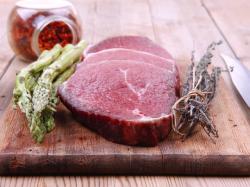Beef Demand: Spring 2015 Optimism In The Consumer Beef Index
August 7, 2015 | 1 min to read

For several years of tracking, consumers have noted a drop in the average number of times beef is eaten in a week. The March 2015 Consumer Beef Index noted an uptick in this measure. Although reductions in domestic supply are keeping a ceiling on the amount of beef consumed, any indication by consumers that beef hits their plate more often is a very positive change. On another measure, comparing the percentage of consumers who plan to eat more beef versus less beef, the “more” beef consumers won out — 18 percent to 15 percent. It all speaks to optimism in beef consumption moving forward.
Background
The checkoff-funded Consumer Beef Index (CBI) is a semi-annual online survey begun in 2007 that is designed to identify and track key consumer perceptions of beef and to spotlight key consumption trends. One thousand and fifty respondents completed the March 2015 online study. The sample is national in scope and is tested for balance with national demographic data, including gender, ethnicity, region of the country and age (ages 13 to 65 were included in the sample). A very small minority of consumers with absolutely no food decision making authority, either at-home or in restaurants, are excluded.
Discussion
This write-up will document several positive shifts in perceptions about beef and reported usage of beef — percentage of consumers eating beef weekly, average number of meals per week, percent of consumers eating beef 3+ times a week. It will also note how strong some of these measurements are for millennials and millennial parents, key target audiences moving forward.
To read the rest of the story, please go to: Beef Issues Quarterly
